I'm not sure what the easy way is to do this, but let me show you the hard way. First, define a function that produces a data frame of the co-ordinates of a regular dodecagon, given its centre co-ordinates and its radius (i.e. the radius of the circle on which its vertices sit):
dodecagon <- function(x = 0, y = 0, r = 1) {
theta <- seq(pi/12, 24 * pi/12, pi/6)
data.frame(x = x + r * cos(theta), y = y + r * sin(theta))
}
Now define functions which take the co-ordinates of a line segment and return a data frame of x, y co-ordinates representing a square and a hexagon:
square <- function(x1, x2, y1, y2) {
theta <- atan2(y2 - y1, x2 - x1) + pi/2
r <- sqrt((x2 - x1)^2 + (y2 - y1)^2)
data.frame(x = c(x1, x2, x2 + r * cos(theta), x1 + r * cos(theta), x1),
y = c(y1, y2, y2 + r * sin(theta), y1 + r * sin(theta), y1))
}
hexagon <- function(x1, x2, y1, y2) {
theta <- atan2(y2 - y1, x2 - x1)
r <- sqrt((x2 - x1)^2 + (y2 - y1)^2)
data.frame(x = c(x1, x2, x2 + r * cos(theta + pi / 3),
x2 + r * cos(theta + pi / 3) + r * cos(theta + 2 * pi / 3),
x1 + r * cos(theta + 2 * pi / 3) + r * cos(theta + pi / 3),
x1 + r * cos(theta + 2 * pi / 3),
x1),
y = c(y1, y2, y2 + r * sin(theta + pi / 3),
y2 + r * sin(theta + pi / 3) + r * sin(theta + 2 * pi / 3),
y1 + r * sin(theta + 2 * pi / 3) + r * sin(theta + pi / 3),
y1 + r * sin(theta + 2 * pi / 3),
y1))
}
Finally, write a function that co-ordinates the first 3 to return a single data frame of all the co-ordinates, labelled by shape type and with a unique number for each polygon:
pattern <- function(x = 0, y = 0, r = 1) {
d <- cbind(dodecagon(x, y, r), shape = "dodecagon", part = 0)
squares <- lapply(list(1:2, 3:4, 5:6, 7:8, 9:10, 11:12),
function(i) {
cbind(
square(d$x[i[2]], d$x[i[1]], d$y[i[2]], d$y[i[1]]),
shape = "square", part = i[2]/2)
})
hexagons <- lapply(list(2:3, 4:5, 6:7, 8:9, 10:11, c(12, 1)),
function(i) {
cbind(
hexagon(d$x[i[2]], d$x[i[1]], d$y[i[2]], d$y[i[1]]),
shape = "hexagon", part = i[1]/2 + 6)
})
rbind(d, do.call(rbind, squares), do.call(rbind, hexagons))
}
All that done, plotting is trivial:
library(ggplot2)
ggplot(data = pattern(), aes(x, y, fill = shape, group = part)) +
geom_polygon() +
coord_equal()

Or, reproducing your original figure:
ggplot(data = pattern(), aes(x, y, fill = shape, group = part)) +
geom_polygon() +
geom_polygon(data = pattern(2.111, 1.22)) +
geom_polygon(data = pattern(0, 2.44)) +
scale_fill_manual(values = c("#3d9af6", "#c4c4c4", "black")) +
coord_equal() +
theme_void() +
theme(panel.background = element_rect(fill = "#f5f5f5", color = NA))




